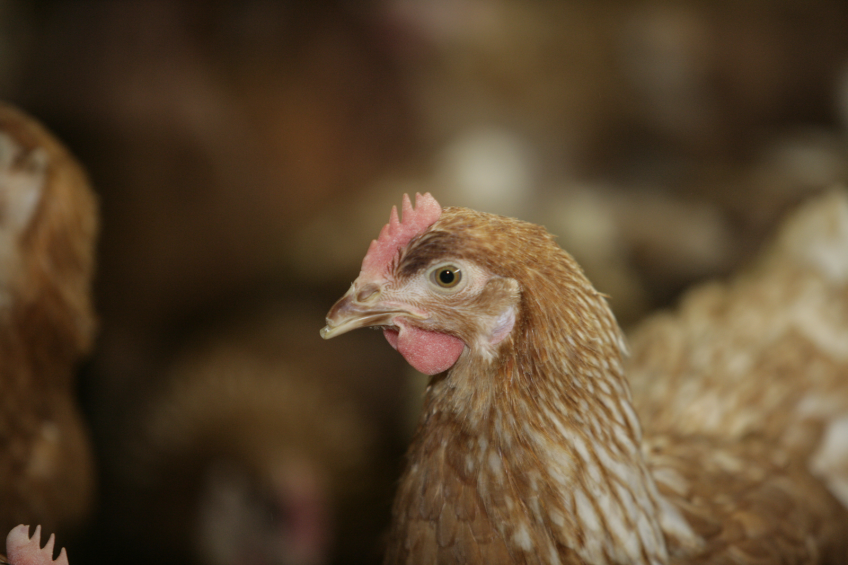Conditions affecting broiler meat quality

Professor Fernando Rutz of the Federal University of Pelotas in Brazil reviewed the major quality issues relating to muscle development of broilers at the 2015 Alltech Symposium in Lexington, KY.
As an introduction Rutz noted the significant improvements in technical performance achieved in broiler-production due to genetic selection and supported by advances in nutrition, housing and prevention of disease. The industry has benefitted from an increase in processing weight for age, decreasing age at harvest and improved feed conversion efficiency contributing to enhanced profitability. These advances have in turn created problems of quality as perceived by consumers, relating to muscle development.
Broiler weight at 40 days has quadrupled
Since 1957, broiler weight at 40 days has quadrupled and breast meat yield has increased by 80 percent. The conditions recognised as being of concern comprise developmental myopathies. This family of disorders relates to the vascularisation of muscle tissue and dysfunction of muscle fibers. Skeletal muscle consists of fibers arranged in bundles separated by connective tissue. Muscle tissue is supplied with blood from arteries within the connective tissue.
Before hatch, muscle fibers undergo hyperplasia, a process involving an increase in the number of normal cells in tissue. After hatch hypertrophy or the increase in size of individual muscle fibers is responsible for growth.
From a metabolic standpoint, skeletal muscle can be divided into Slow-oxidative fibers, Type I ; Fast-oxidative fibers, type IIA and Fast-glycolytic fibers, type IIB. The first two categories are supplied with blood by numerous capillaries. Anatomically there are fewer capillaries vascularising the fast-glycolytic fibers. The slow-oxidative fibers contain a high content of myoglobin hence their red color and reliance on oxidation of ATP for release of energy. The rate of fatigue of this category of muscles is slow. In contrast fast-glycolytic fibers comprising white muscle have low myoglobin content but contain glycogen which is degraded by an anaerobic process to release energy. The muscles in this category undergo a rapid rate of fatigue.
Dr. Rutz differentiated among the most frequently encountered conditions affecting muscles of fast-developing broilers:
White striping
The defect can range in size from visible striations ranging from less than 1mm to above 2mm in width. Prevalence in some flocks can exceed 12 percent and the defect is visible in fillets (pectoralis major muscle). The prevalence of white striping is directly correlated to high weight for age and is characteristic in broilers above 3.5 kg.
On microscopic examination affected muscles show deposits of fatty tissue displacing damaged myofibers, resulting in the characteristic visible changes. In contrast to normal tissue, moisture is slightly lower and protein is significantly lower, but these losses are balanced by higher levels of fat and collagen both of which are deposited at the expense of muscle tissue. The fatty acid composition of meat from fillets with severe white striping is higher in monounsaturated fatty acids and lower in polyunsaturated fatty acids. Specifically EPA and DHA are significantly lower in comparison to unaffected muscle tissue.
Increasing the EPA and DHA content of feed is ameliorative. The beneficial effect of supplementing diets with vitamin E, selenium and sulfur-containing amino acids has yet to be demonstrated.
Woody breast
This is an inflammatory condition in which the breast muscle is pale in color and has a markedly firm texture. In this condition, capillaries within the fascia surrounding muscle bundles are constricted by hypertrophic muscle fibers resulting in decreased vascularisation and wider diffusion distances. Microscopic examination of tissue from cases of woody breast show a basophilic staining response indicating myodegeneration. There is no bacterial involvement in the inflammatory process which is attributed entirely to hypoxia.
Under field conditions an improvement in the prevalence rate follows administration of EconomasE containing an antioxidant, vitamin E and bioplexed selenium. There is evidence that increasing the arginine content of diets is beneficial.
Green muscle disease
This condition as observed in tenders (pectoralis minor muscle) is also referred to as deep pectoral myopathy. The myodegeneration is associated with excessive muscular activity when broilers are excessively stimulated and flap their wings. The condition is obviously exacerbated by body conformation which favors hypertrophy of the pectoral musculature. Green muscle condition can occur at any age although it is only apparent on deboning or in the case of roasted whole carcasses by the consumer at the time of carving.
Prevention involves maintaining an appropriate light intensity, low noise level in the house and preventing excessive movement and excitation. Supplementing diets with antioxidants and organic selenium has been shown to ameliorative.
Cranial dorsal myopathy
This is a recently described condition which affects the latissimus dorsi muscle. The defect was first reported in 2002 in Brazil and may cause up to six percent downgrades. Since 2007, prevalence has been in the region of 0.5 percent of carcasses. The latissimus dorsi muscle comprises slow-oxidation fibers, Type I which are slow to fatigue but are oxygen dependent.
The condition is more severe in males especially with a body weight above 2.5 kg and there is a strain-related predilection. Birds affected with cranial dorsal myopathy may also show changes in the thigh muscles. Under field conditions downgrading due to this myopathy was reduced in a complex in Brazil from a prevalence of two percent to less than 0.5 percent by supplementing diets with 0.3 ppm selenium in the form of Sel-Plex, an organic form of selenium. Subsequent to withdrawal of the bioplexed selenium supplement, condemnation increased from 0.5 percent to 2.0 percent demonstrating the protective effect of the additive.
No single common cause of myodegeneration
There is no single common cause of myodegeneration, although the predisposing factors relate to high growth rate and breast yield which are functions of genetic selection. Appropriate diagnostic procedures are required to differentiate among the causes. This will enable meaningful selection from among nutritional and managemental modalities to reduce downgrades and financial loss.
Source: chick-cite.com













